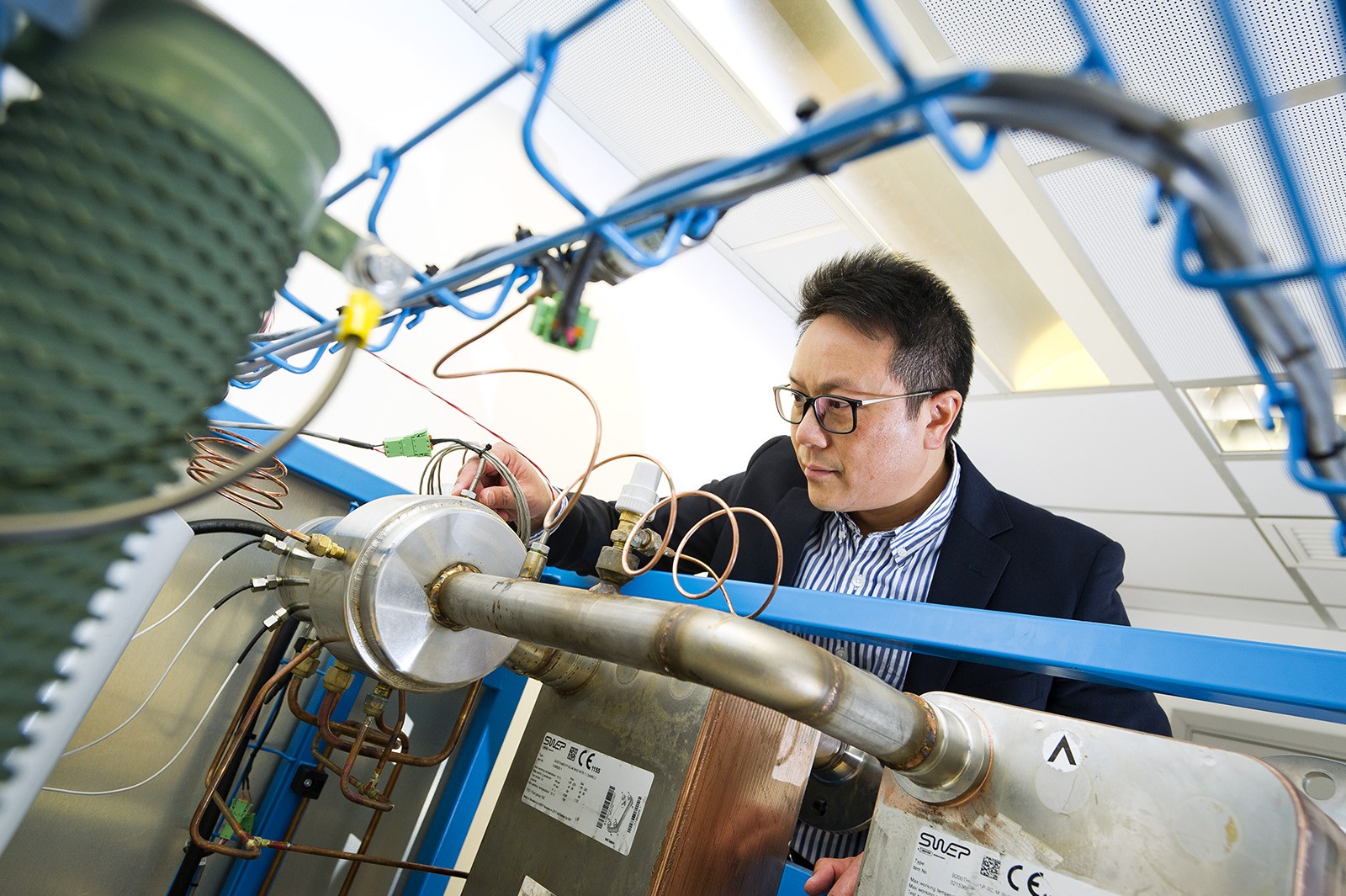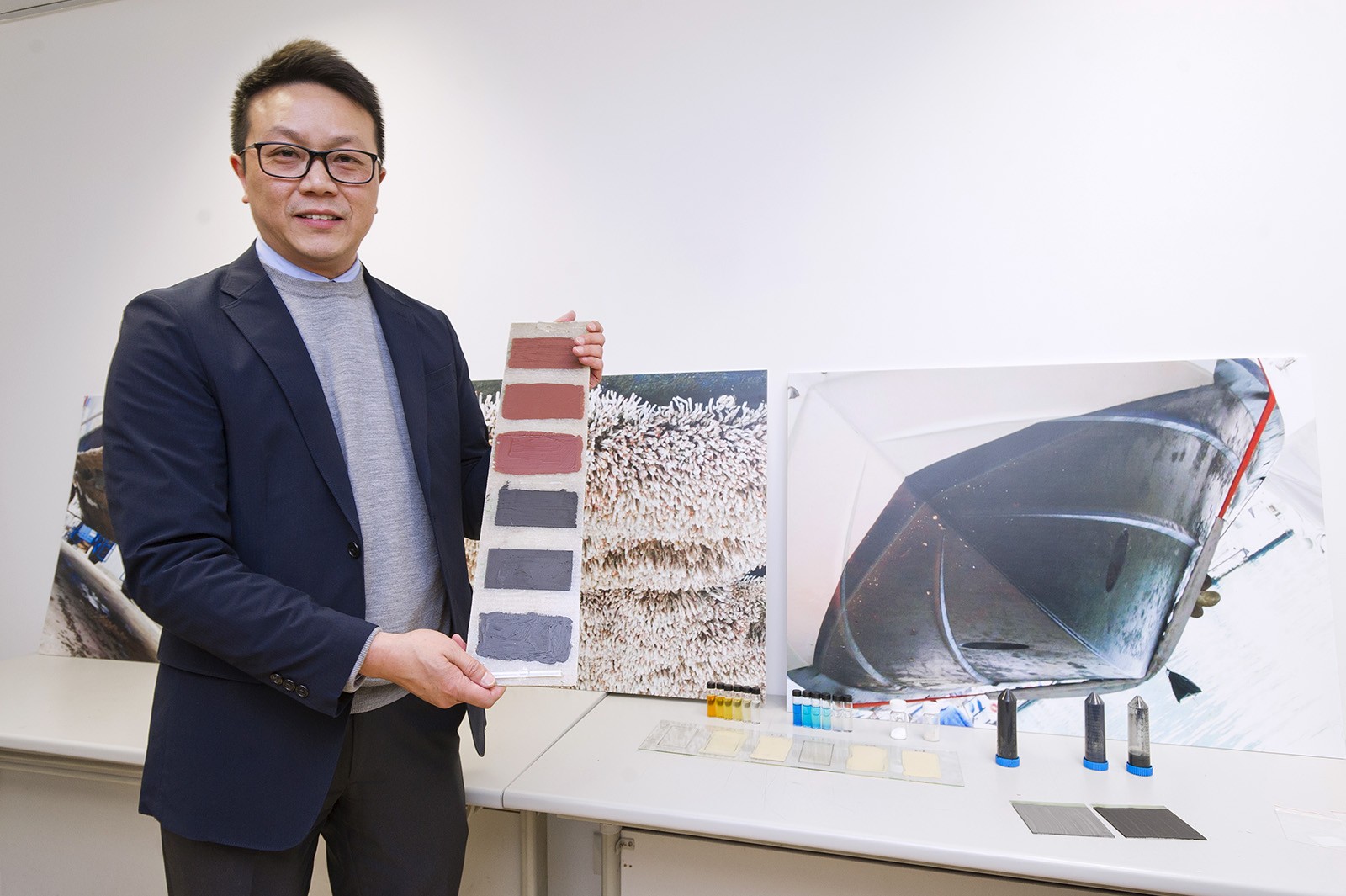Funding boost for more efficient air-con technology
Cathy Choi
A research project conducted by the School of Energy and Environment (SEE) at City University of Hong Kong (CityU) has been granted more than HK$20 million for developing novel technology that converts the waste heat from air-conditioning systems into useful electricity.
This breakthrough technology anticipates saving 70% of the electricity consumed by air-conditioners.
Air-conditioning is the largest energy consumer in urban areas, according to the project’s lead investigator, Professor Michael Leung Kwok-hi, Associate Dean of SEE. Although air-conditioning units cool indoor air, they reject tremendous heat, which impacts the surrounding environment.
The aim of this two-year project is to develop ways to recover this thermal energy and convert it efficiently into electricity. The electricity can then be used by the air-conditioning unit itself, for lighting or for other home appliances. This process will improve energy efficiency and, at the same time, resolve thermal discomfort issues.
Existing Organic Rankine Cycle (ORC) technology can already convert heat into electricity but it works only with heat at high temperatures of 200°C or above, and cannot be applied to the heat rejected by air-conditioning systems commonly at low temperatures of between 60 to 80°C, said Professor Leung.
By reforming the air-conditioning systems and ORC, and integrating thermoscience and nanotechnology, the electric power generated from low-temperature heat can significantly raise the Coefficient of Performance (COP) of the air-conditioning systems from an average value of 3 to 10, which means much higher energy efficiency and lower energy consumption, which also means economic benefits.
“The research involves a number of key technologies to be developed by CityU. For instance, advanced nanotechnology changing the metal surface properties of the heat exchangers can improve the heat transfer efficiency, increase the temperature of the thermal energy, resulting in higher heat-to-electricity conversion efficiency. In addition, a single thermodynamic cycle is designed for hot water production and electricity conversion concurrently to enhance the overall system performance,” Professor Leung said.
This project has received funding worth HK$21 million from the Innovation and Technology Fund under the Innovation and Technology Commission and Techskill (Asia) Limited (Techskill).
In previous research, Professor Leung has successfully used the waste heat from air-conditioning systems to generate hot water in hospitals and hotels by another technology integrated with a heat pump, but the demand for hot water is relatively low, and extra heat still has to be discharged.
Meanwhile, Professor Leung is working on another research project with Professor Dennis Leung Yiu-cheong from the Department of Mechanical Engineering of the University of Hong Kong for an eco-friendly antifouling paint that can protect marine ecology.
He pointed out that micro-organisms attached to ships’ hulls increase frictional resistance when sailing and increase fuel consumption by an extra 40%. Antifouling paint can mitigate these effects but the paints on the market usually contain heavy metals, such as cuprous oxide (Cu2O), that cause marine pollution.
Last year Professor Leung collected samples from marine water and soil from the seabed near local shipyards and conducted tests for heavy metal and copper. The results showed that the copper in one of the samples exceeded the standard by 60 times, suggesting that the environment nearby the shipyard had been polluted by heavy metals from the antifouling paint.
In collaboration with Techskill and Aviva Yacht Limited, Professor Leung is conducting research on nanophotocatalytic antifouling paint. The study reveals that upon activation by sunlight, the new paint can disrupt the cell wall of micro-organisms.
In addition, its super hydrophobicity and super wettability features can prevent micro-organisms from attaching to hulls and thus reduce water resistance and fuel consumption.
Initial tests have shown the newly developed paint to be effective in protecting marine ecology and indicated the potential for further development.

